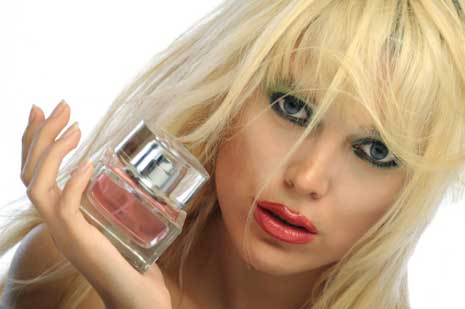Reckless Self-Interest Of The Fragrance Industry
People must be protected from exposure to fragrance ingredients that may cause cancer or fetal, hormonal or reproductive toxicity, the Cancer Prevention Coalition warned today. But federal agencies are not regulating these ingredients, leaving the public at risk due to the “recklessly irresponsible” behavior of the fragrance industry, says CPC Chairman Samuel S. Epstein, M.D.
Protection of the public would be implemented by passage of Senator Frank Lautenberg’s Safe Chemicals Act of 2010, Dr. Epstein advises. This bill requires manufacturers to provide information on “chemicals of concern” in consumer products.
The bill would provide the public with information on the dangers of these products, especially, says Dr. Epstein, “as the U.S. Food and Drug Administration (FDA) has recklessly failed to do so since passage of the 1938 Federal Food, Drug, and Cosmetic Act.”
Perfumes and fragrances are the single largest category of cosmetic and personal care products, especially products used on the hair, face, and eyes. These products represent nearly 50 percent of all prestige beauty dollars now spent in the United States. Fragrances are also extensively used in a wide range of everyday household cleaning products.
Exposure to toxic ingredients in cosmetics and personal care products is predominantly through the skin. In contrast, exposure to toxic ingredients in household cleaning products is predominantly through inhalation.
The FDA has direct authority under the terms of the 1938 Federal Food Drug and Cosmetic Act to regulate toxic ingredients in cosmetics and personal care products. However, seven decades later, it has still failed to do so. Similarly, the U.S. Environmental Protection Agency has also still failed to regulate these toxic ingredients in household cleaning products.
“In the disturbing absence of any federal regulations,” Dr. Epstein says, the policies and practices of the cosmetics and personal care products industries are determined by its International Fragrance Association (IFRA). This is an international trade organization of over 100 perfume and fragrance manufacturers, representing fifteen regions including the U.S., Europe, South America, Australia, and the Far East.”
The primary objective of IFRA is to protect the self-regulatory practices and policies of the industry by the development of a Code of Practices and safety guidelines, Dr. Epstein says. However, these include maintaining the “trade secret” status of perfume and fragrance ingredients, and pre-empting international legislative labeling and safety initiatives.
Of the more than 5,000 ingredients used in the fragrance industry, approximately 1,300 have so far been evaluated by the industry’s International Research Institute for Fragrance Materials. This institute is a “non-profit” organization, created by IFRA in 1966 to conduct research and testing of fragrance ingredients.
“However,” Dr. Epstein warns, “this testing is minimal and restricted to local effects on human skin, and short-term toxicity tests in rodents.”
Evaluation of ingredient safety is then made by a board of toxicologists, pharmacologists, and dermatologists, identified by the institute as “independent” without disclosure of their qualifications, let alone conflicts of interest.
Their findings are presented to IFRA’s Scientific Advisory Board, and then published in its trade journal, Food and Chemical Toxicology. The information reported in this journal is the basis on which IFRA formulates its own “safety guidelines.” However, Dr. Epstein points out, due to the “trade secret” status of fragrances, manufacturers are still not required by the FDA to disclose their ingredients on product labels or in any other way.
“These ingredients include a wide range of allergens. They also include synthetic musks, particularly tonalide and galaxolide, designed to mimic natural scents derived from musk deer and ox,” Dr. Epstein explains. “They are persistent and bioaccumulate in the body, have toxic hormonal effects, and have been identified in breast milk.”
In 1973, in efforts at damage control, IFRA created a Code of Practice listing prohibited ingredients, based on its own safety analyses. This listing has been periodically updated.
In May 1999, in response to repeated complaints of respiratory, neurological, and other toxic effects following the use of Calvin Klein’s Eternity perfume, the Environmental Health Network of California hired two testing laboratories to identify the ingredients in the perfume.
Analysis of these results by the Cancer Prevention Coalition, summarized in Dr. Epstein’s 2009 book Toxic Beauty, reveal the following:
- 26 ingredients whose “Toxicological properties have not been investigated,” or “toxicology properties have not been thoroughly investigated.”
- 25 ingredients that are “Irritants.”
- 5 ingredients that are “Skin sensitizers,” or allergens.
- 3 ingredients that show “Fetal, hormonal, and reproductive toxicity.”
- 2 ingredients that “May cause cancer.”
In efforts at damage control, IFRA agreed that information on allergenic ingredients in perfumes like Eternity should be made available, but only on request from dermatologists, for diagnostic purposes. “This “Fragrance On-Call List” action denies the public its right to know,” Dr. Epstein warns.
More disturbingly, Dr. Matthias Vey, president of IFRA, failed to respond to repeated warnings from August to October 2003 from the Cancer Prevention Coalition. These urged “all fragrance products be labeled to the effect that, apart from the absence of known skin and respiratory allergens, they contain no known carcinogens, gene damaging, hormonal, or otherwise toxic ingredients.”
As reported in “What’s That Smell,” a June 2010 report by Women’s Voices of the Earth, faced with continuing criticism of unresponsiveness, IFRA initiated a “compliance program” in 2007. “However,” Dr. Epstein warns, “this is based on testing of a mere 50 fragranced products from the global market place to detect prohibited ingredients.”
A fragrance may be restricted by IFRA on a variety of grounds. These include: use in products at higher-than-recommended concentrations, sensitization, photosensitization, phototoxicity, allergenicity, neurotoxicity, carcinogenicity, undefined biological effects, and inadequate data.
“This restriction, though, works better in theory than in practice,” Dr. Epstein emphasizes. “There is no pre-approval process for ingredient safety other than that claimed by the Research Institute for Fragrance Materials.”
Literature: Cancer Prevention Coalition, Reckless Self-Interest Of The Fragrance Industry, CHICAGO, IL, June 28, 2010
Related Articles:




 PHILADELPHIA
PHILADELPHIA